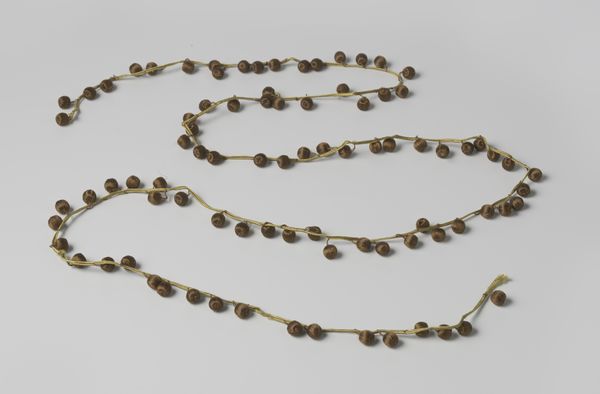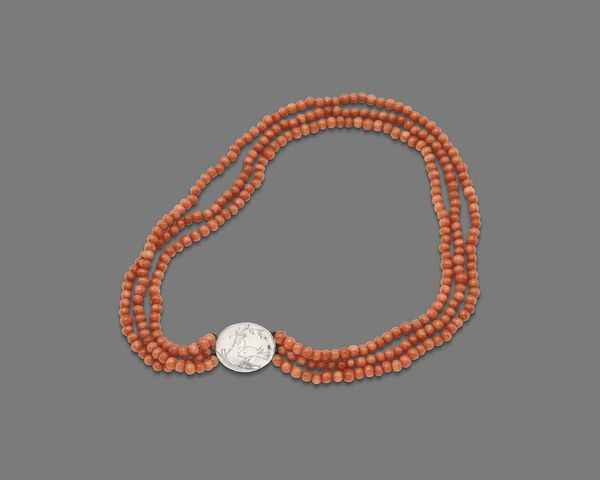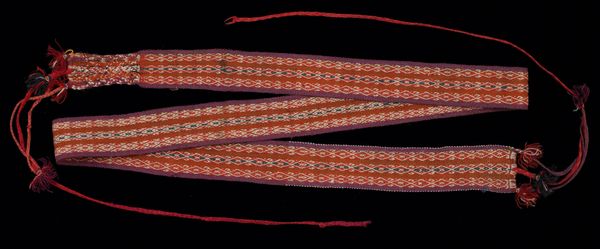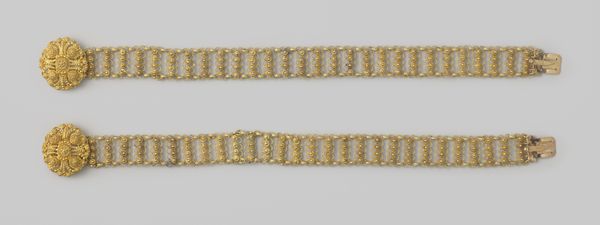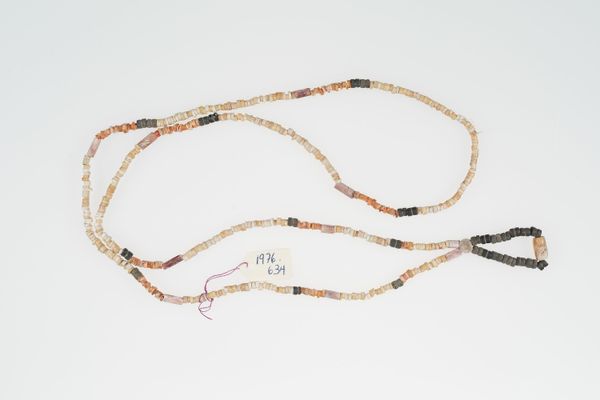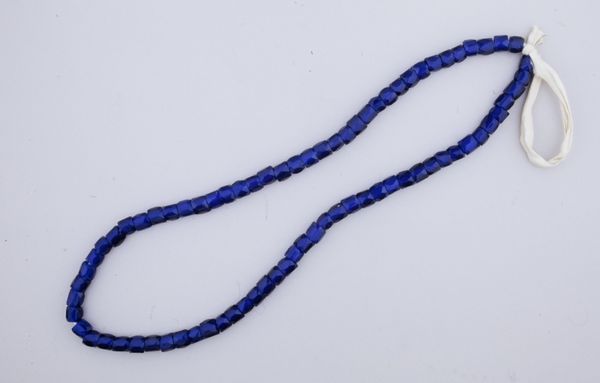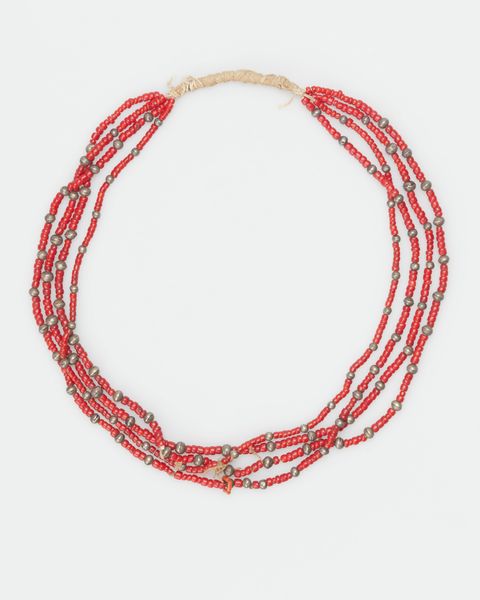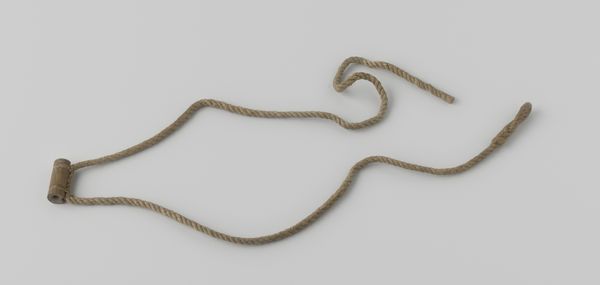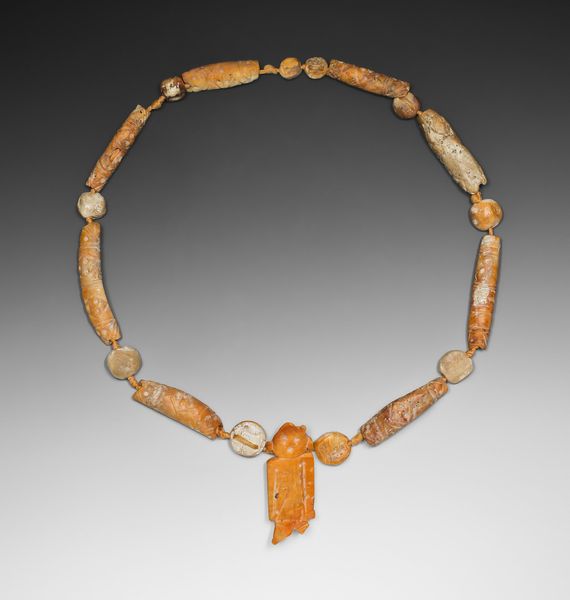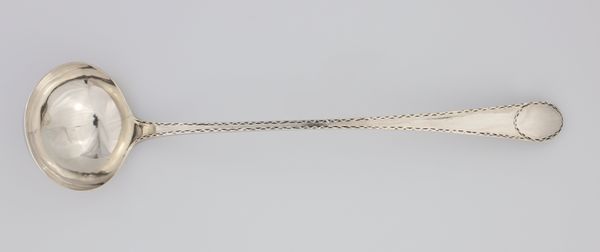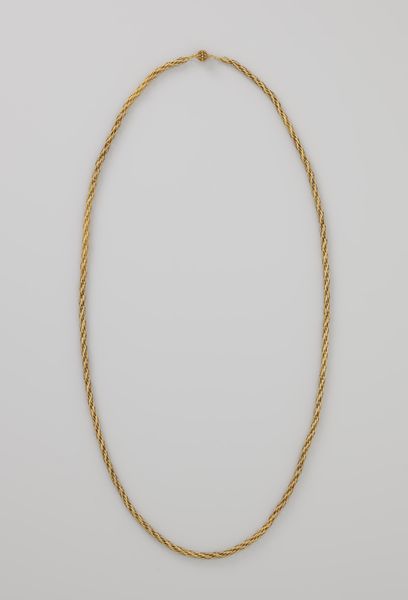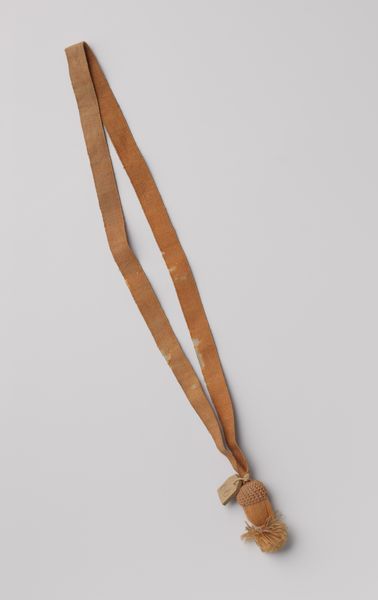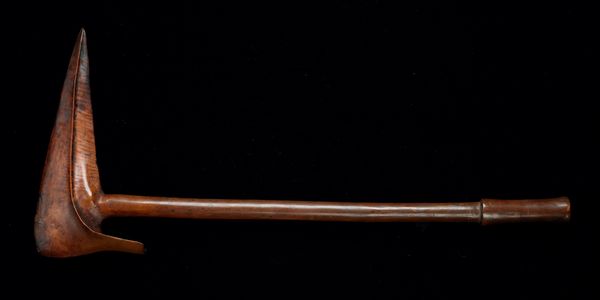
Copyright: Rijks Museum: Open Domain
Editor: We're looking at "Twee armbanden met bloedkoraal," or "Two Bracelets with Blood Coral," dating from 1850-1878. They're made of metal, textile, and coral, a fascinating mix of materials! There is an almost brutal rawness that opposes its beauty... What social narratives do these bracelets evoke for you? Curator: These bracelets invite us to consider the complex relationship between adornment, identity, and power during the Romantic era. Coral, especially blood coral, carried significant symbolic weight. Beyond its association with beauty, it was often linked to protection, fertility, and even social status. How might these associations reflect or reinforce existing power structures related to gender and class at the time? Editor: That’s really interesting. So, were these bracelets exclusively for women of a certain class, and were they only meant to showcase their status? Curator: Not exclusively, but predominantly. Objects like these were deeply entangled in the performance of femininity and respectability within a patriarchal society. Think about the colonial implications, too. Where did the coral come from, and what were the conditions under which it was obtained? Adornment always comes at a cost, doesn’t it? The 'erotic art' theme assigned to these pieces can invite a more subversive investigation. Does this labeling challenge or affirm the limited roles assigned to women and eroticism during this time? Editor: That gives me a lot to think about – more than I expected when I saw these bracelets! Curator: Exactly! Art objects, even seemingly simple ones, hold within them layers of historical, social, and political meaning, revealing inequalities within different societies. Looking at them critically is an invitation to unpack all of it.
Comments
No comments
Be the first to comment and join the conversation on the ultimate creative platform.
